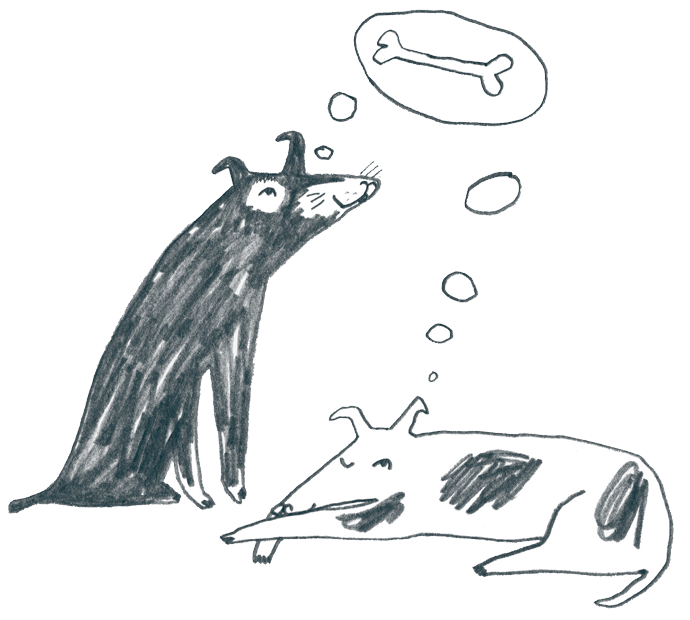Thoughts and conversation from our nomads.
How We Kick-Off New Squads
Let them be in control of the way they work ... After having been though a day of letting people self-organise into squads David Mole, Trade Me's head of projects (and my Agile partner in crime) and I are often being asked how we kicked off the new squads and how we make sure they work in a discipli...
Are your votes going to waste?
It's common among Agile teams to use some form of voting to make decisions, and that's especially true for retrospectives where the team as a whole decides what to fix next. Over the years I have facilitated many retrospectives and had the opportunity to vote for many things, over that time some pat...
How we measure output and productivity
... getting more stuff done At Trade Me we want to measure the overall health of Tech (that’s our team of 125 designers, developers, testers, BAs, and Squad Masters) to identify trends and to know if we are getting better (or worse!). We know that when we measure something it is a strong way of sayi...
Quick Guide to Self-Selection
This free Self-Selection pocket guide is a quick guide to Self-Selection. Use these handy checklists for preparing and running self-selection events of 20-200 people. It can be used as a stand-along guide or as a companion to the book “Creating Great Teams - How Self- Selection Lets People Excel” by...
Spotify's Scaling Agile with Tribes, Squads, Chapters & Guilds at a Glance
Spotify's whitepaper on how to structure an organisation with Agile tribes, squads, chapters and guilds has been the most inspiring and interesting idea to come out of the Agile scene in the past three years. For anyone who has read the excellent paper we have created a one page infographic on how i...
Large Scale Self-Selection - the Trade Me Case Study
Organisations get the best results when people can choose what they work on and who they work with. In that spirit we decided to let people self-organise into small, cross-functional teams called squads. Up until last week we had six established squads within two tribes the rollout had been purposef...
Stand by your values!
I recently ran a “get to know your team” session to help a team with lots of new members to better understand each other’s history, motivations, likes and dislikes. We did a number of exercises including journey lines, what do you value and team flags and we wrapped it up with postcards (insert ref...
Self-Selection: The Self-Organising organisation
... let teams self-select! At Trade Me we’re in the process of getting everyone into small, cross-functional teams (squads) that will persist over time and across projects. Up until last week we had six established squads and the rollout had been purposefully slow and controlled. Now we felt there...
Postcards (from the edge)
... or Team Closure within a Project Closure Why? Projects come to an end, which means that a team that has been working closely together, may well be torn apart. This can lead to a sense of loss associated with disbanding some strong team relationships; especially if the team has reached the fourth...
Sometimes average is good.
The Big Estimation Debate There have always been, and no doubt always will be debate over estimation; the pros and cons, behaviour anti-patterns and the how and why of it all. In this post I am not going get into that debate but I want to share with you some experiences I have had with estimation th...
Daily stand-up with a goal
Why your daily standup should be driven by a daily goal Let’s face it, the daily standup can be a boring affair. I’m not talking about abominations with 16 people or half-hour long status reporting meetings. I’m talking about the ones that are kind of okay and adhere to the rules but nonetheless are...
Every day should be Fedex day!
5 things that happen when you let ‘em loose ... Last Friday we had Fedex day at Trade Me. The aim of a FedEx Day is to complete something deliverable within a 24 hour period, i.e. to go from idea to a shippable product within a day. It was fun, lots of great projects saw the light of day and I enjoy...
Risk registers and meetings are boring - try a project premortem instead ...
What is a premortem? A premortem is a project postmortem that’s run before a project. During a postmortem people analyse and discuss what went wrong, what went well and what could be improved. While postmortems are very useful the problem is that by the time we run them the project is usually over a...
9 Agile steps that injected magic into our project.
Hi, my name is Simon and I am a Project Manager at Trade Me. Sandy kindly asked me to contribute to her blog, and I consider it a great honour. Below is my story about how we embraced Agile to inject magic into our project. As a Project Manager I am keenly aware that most projects fail and that’s a...
Team ground rules and working agreements
What are ground rules? Ground rules are a list of behaviours and rules a squad decide are useful for working together as a team in a productive and respectful way. A list of ground rules is an incredibly useful tool for guiding group behaviour. They are part of establishing an environment where peo...
Agile Australia 2013
Last week Jan, Mike, Anthony and I were at Agile Australia in Sydney and had an incredibly good time. The conference turned Twitter handles into people, exposed me to TimTam slams, and taught me that Beyond Budgeting is not a boring accounting thing but a riveting management philosophy. I presented...

